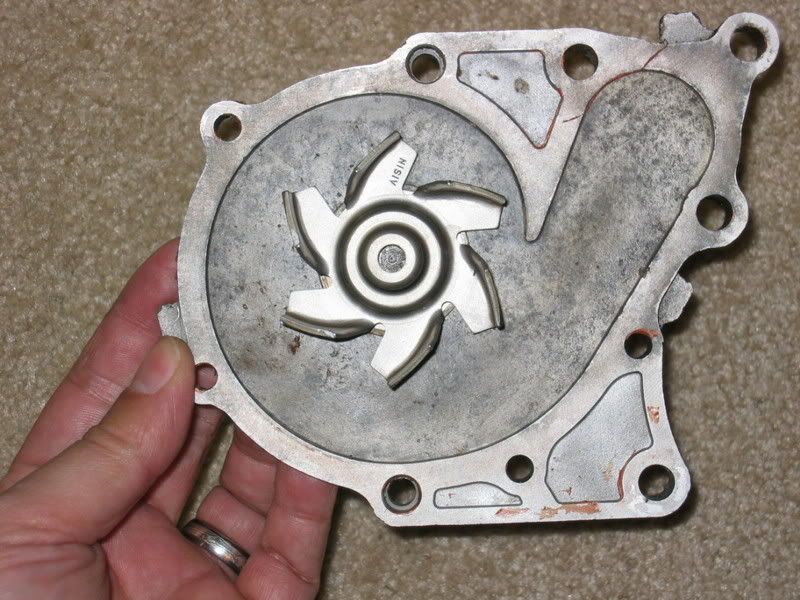Need Pic of Impeller side of water Pump
- Thread starter suprageezer
- Start date
You are using an out of date browser. It may not display this or other websites correctly.
You should upgrade or use an alternative browser.
You should upgrade or use an alternative browser.
YES, Thank You Gilsdorf, thats Perfect. I wanted to see if I could weld a anti-cavatation plate onto the impeller so the water is force fed at any engine rpm. With all the muscle cars I've owned over the years I have done that and it allowed the temp to stay at exactly what the thermostat rating was. Even on the hottest days this keeps the water circulating in the block when you need it most, in traffic, at low rpms, and at highway speeds when the flow drops due to cavitation. I believe this would help stop some of the head gasket issues and overheating when an engine sees higher temps under loads and the water starts cavitating. another thing I do is coat all the internal exposed and even gasket surfaces with Red Insulationg Enamel to stop the corrosion and give the gasket surfaces a more stable surface to seal on. Many racers as well as myself coat the inside of any rough engine surface such as blocks or heads that have oil draining on them to help speed up oil travel back to the pan. Its pretty much impervious to chemicals and hardens with engine heat to an almost rock hard coating.
Thanks Rick
Thanks Rick
Last edited:
You are absolutely right about the water pumps on these 7M motors. I've done some testing on mine, and found that the pump barely moves water at RPMs under 1k.
Heavy traffic, long redlights, and such will overheat you quick if you are not paying attention.
Heavy traffic, long redlights, and such will overheat you quick if you are not paying attention.
Yeah, it's a great idea!
If it's a good execution, you have a buyer for one right here, Rick. Keep us posted.
If it's a good execution, you have a buyer for one right here, Rick. Keep us posted.
Here's the link that I bought my first pump with an anti-cavitation plate for my 454 suburban. After I had it in my hands and saw that all they did was weld a galvanized plate to the impeller I realized the impact it would have on water circulation at any speed. I also realized I would be sacrificing a small amount of HP since it would actually MOVE water instead of just spinning at certain speeds, especially at freeway speeds, and idle. I first used the flat galvanized plate for a four plug junction box, drilled a whole in the center of it the size of the shaft, rounded it the same OD as the impeller, slipped it on and tack welded it to all the fins of the impeller. I made it for my very modified 360 in a Dodge A100 Van, that NO one had ever figured out how to keep cool since the engine is 4 feet from the front end in a BOX. It worked wonders; it never once rose above the 180 thermostat rating, even when towing our travel trailer up the longest hills on the hottest days. Another plus was it seemed to have power on hotter days when in the past it seemed like it would ping, even with premium then lose some while towing. Basically what I will try and do this weekend is take one off my old engine, make a plate, and check for clearance problems on the back wall so the new plate welded onto the impeller does not touch it. It looks like it will, I’ll slot the plate to drop down onto the impeller so it's flush with the ends of the fins. I really think this could help solve the BHG issues these engines have; it just seems to me the water flow is not right. Even this gurgling everyone complains about, that’s air trapped in the heater core, should stop since the pressure will certainly move the air out of that system into the top of the radiator where it can be properly burped out via the burp bottle. Air in water equals REALLY bad thermal transfer, so even the gurgling sound shows the system isn’t right.
http://www.flowkooler.com/home.php
http://www.flowkooler.com/home.php
you'll find there are 2 versions of the water pumps- the stamped steel version pictured and a crappier cast version. just a heads up....

